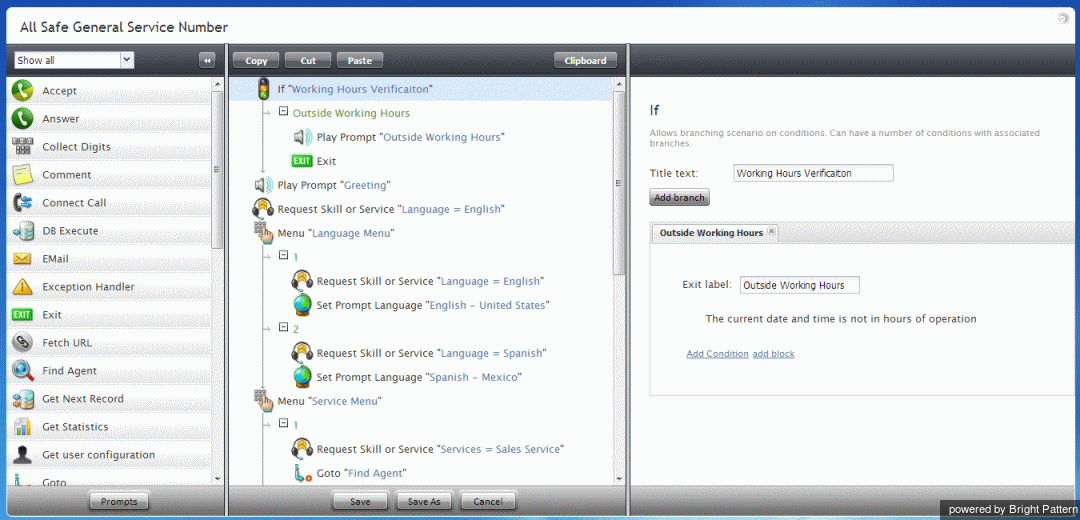Scenario Builder Overview
For every customer interaction that enters your contact center, the ServicePattern solution has to process that specific interaction to determine what to do with it, e.g., what prompts or announcements to apply, what resources to queue for, what music to play, or when to over-flow to alternate resources. The logic of such automated interaction processing is defined in scenarios. Execution of a scenario with respect to a specific interaction is triggered by a particular event such as arrival of a call at a specific access number or initiation of a chat session from a specific web page.
Scenarios are designed and edited in the application called Scenario Builder. This application is started from the Contact Center Administrator application when you add a new scenario or select an existing one for editing. For more information, see section Scenarios Overview of the ServicePattern Contact Center Administrator Guide.
Scenario Builder incorporates a graphical user interface to visually connect a sequence of functional blocks, thus building your scenario. This is done using a flowchart format that represents the sequence of interaction processing steps in the scenario. Different blocks perform different functions, such as playing prompts, collecting digits, or looking for available agents.
To add a block to the scenario, select it from the list on the left and drag it to the desired location within the scenario. To remove a block from a scenario, select the block within the scenario and drag it back to the list of blocks on the left.
Each block has its own configuration attributes, which appear in the edit pane on the right when the block is added to the flowchart or selected within the flowchart. The attributes specify the function represented by the block. For example, the Play Prompt block has an attribute that specifies which prompt shall be played when this block is executed in a specific processing step of a specific scenario.
A scenario typically processes blocks sequentially; however, some blocks have multiple paths or options that the scenario can take depending upon a certain condition or an outcome of the block execution. These paths are called conditional exits. Conditional exits enable you to determine how the Scenario responds to certain conditions that may occur during the processing of an interaction, such as an agent not responding, or a customer input.
The subsequent sections of this guide describe specific scenario blocks, their attributes and usage. The blocks are listed in the alphabetical order.

